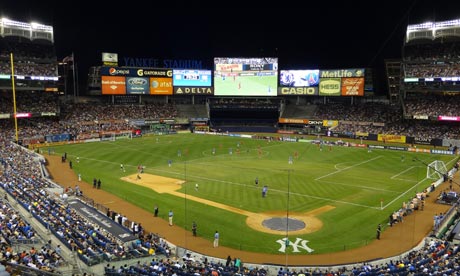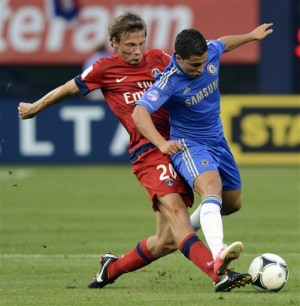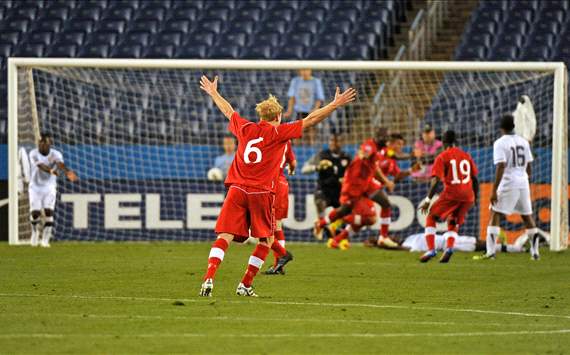The Evolution of the USMNT's 4-3-3
Ford Bohrmann
The United States Men’s National Soccer Team traveled to Krasnodar, Russia, last night, to play the 9th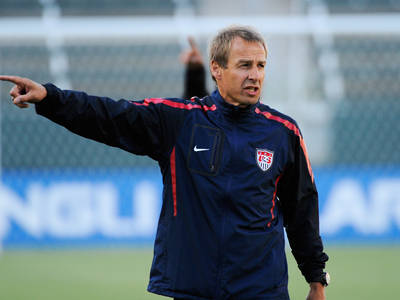 Klinsmann ranked FIFA squad in the world, securing a 2-2 draw with a stoppage time goal from midfielder Mix Diskerud. More important than the fixture or the result, though, was the chance to see Jürgen Klinsmann’s first attempt to integrate the USMNT’s future with its present. Youngsters Juan Agudelo, Josh Gatt, Mix Diskerud, Terrance Boyd and Joe Gyau were all included in the squad, as was Timothy Chandler, who as already emerged as Klinsmann’s choice at right back. The trip was about the continued evolution of the midfield and understanding what the current formation will look like further down the road.
Klinsmann ranked FIFA squad in the world, securing a 2-2 draw with a stoppage time goal from midfielder Mix Diskerud. More important than the fixture or the result, though, was the chance to see Jürgen Klinsmann’s first attempt to integrate the USMNT’s future with its present. Youngsters Juan Agudelo, Josh Gatt, Mix Diskerud, Terrance Boyd and Joe Gyau were all included in the squad, as was Timothy Chandler, who as already emerged as Klinsmann’s choice at right back. The trip was about the continued evolution of the midfield and understanding what the current formation will look like further down the road.
What we did not see during last night’s match was any answer to the questions surrounding the central defense and the defensive back four in general. Timothy Chandler and Fabian Johnson seem solidified in their spots at right and left back, respectively, but the center back position is still a malignant problem for this team. In the context of what Klinsmann is trying to accomplish with his new roster, however, its should be noted that while the backline continued to be suspect, the United States’ defensive lapses fell more into the lap of the evolving midfield.
The Russian players spent all night making free runs in behind the midfield trio of Jermaine Jones, Danny Williams, and Michael Bradley, leaving the defense to backpedal in the face of an onrush of three or four attackers. Poor positioning in the center midfield turned the game into a seemingly endless display of forward movement by the Russians. Individually, Williams, Jones, and Bradley played with varying degrees of quality, but as a unit there was consistently no cohesion.
While Danny Williams has been solid since moving from an outside position into the center of the field, yesterday’s match was just one of those nights where everything went sour for him. Williams will continue to be included in the starting XI and the more we see out of him, the better idea we have of what he can provide. But for now, I’m not too concerned with the big picture for him.
The biggest concern for me is the repeated inclusion of Jones. Clunky is the only word that comes to mind watching Jones play. Within the first 16 minutes of the game, he had already lost the ball three times in his own half. He has no touch in tight spaces and cannot operate in passing triangles. On occasion, when he has room to run at opposing defenders, he can actually be quite dangerous – late in the second half he operated as almost a left-winger and made two or three runs that ended with dangerous crosses into the box. At the same time, tough, he did sky the Americans’ best chance of the second half over the bar. His lack of class in the midfield outweighs his ability to occasional march forward.
Stepping aside, I need to say that the Maurice Edu Midfield Experience needs to end. Now. He played well as a centerback against Mexico and if Klinsmann wants to give him some run there then try it out. But he is too much of a liability to play another second in the midfield. He turns the ball over in extremely vulnerable areas with way too much frequency. Tim Howard can only make so many two-on-one desperation saves before they start going past him. Edu’s substitution minutes should be given to younger players who need experience.
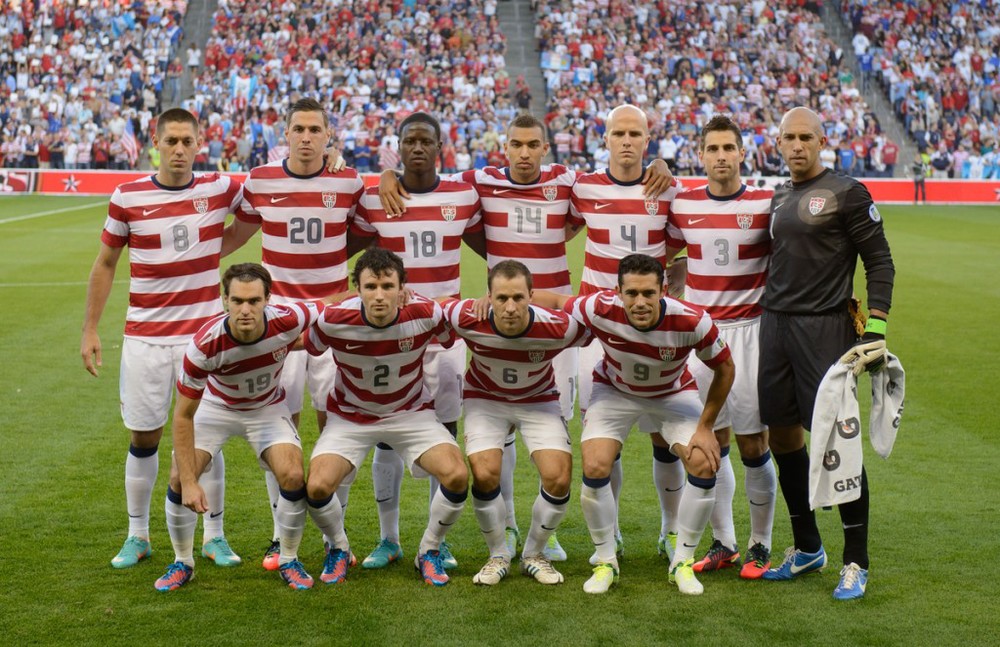
The 4-3-3/4-2-3-1, whatever you want to call it, system can work, given the glut of speedy, creative wingers and center forwards who can hold the ball up. Playing a flat three in the midfield did not work last night, and it wont in the future, because the United States doesn’t have the personnel to play a free-form trio and roles need to be more clearly defined. Even with Zusi in for Jones, and flanked out wider; the formation is too strange for me. I’d like to see Bradley play deeper in the midfield where he can orchestrate ball movement between the backline and the midfield. Bradley and Williams complement each other in the sense that Bradley is there to move forward and Williams is there to clean up defensively. Bradley is the most important player on the team and having him as the foundation of the midfield is paramount to the United States’ success. But putting the pressure on him to be the primary playmaker in the attacking third is too much.
To ease Bradley’s responsibilities, Klinsmann needs to inject a true Number 10. Zusi most closely resembles that player, but he is more effective as a winger and does not operate as much in the center of the park. His return to the squad should see him play higher up on the right wing. As for the Number 10, unfortunately, Stuart Holden is perfect for this role. But as every day passes, it looks more and more like he will never return to his previous form after being Jonny Evans'ed a year and a half ago. It seems like distant memory now, but that season with Bolton, Holden’s name was being thrown around in the English Premier League Player of the Season discussion. With Holden essentially a pipedream at this point, some experimenting needs to be done to see who can play CAM. In the past, Landon Donovan and Clint Dempsey have dabbled in that role, but neither seems comfortable there. The two candidates to rise through the youth and senior ranks are Joe Corona and Mix Diskerud – the two center midfielders from the U-23 team that failed to qualify for the London.
At this point, there’s no way of knowing which of the two 22-year-olds can distinguish himself, but there has to be a way to work them into the senior squad during World Cup Qualifying. I know it is unpopular for managers to lean on young players, as it exposes them to more criticism if the youngsters underperform, but what is the upside to the continuing inclusion of an Edu or a Jones? Diskerud and Corona may not be ready just yet, but they should be given the chance to prove themselves as Ale Bedoya, Jose Francisco Torres, and Benny Feilhaber once were.
Klinsmann continues to break the mold of traditional American soccer and sever all stylistic ties from the Bob Bradley era. Even though it’s frustrating to watch at times, the work the players are putting in to adapt this new system is evident on the field. With the amount of talent at Klinsmann’s disposal, the road to the World Cup for the USMNT is looking clearer each match.
Post by Alex Arthur. You can follow him on Twitter: @SoccerStatUSMNT
